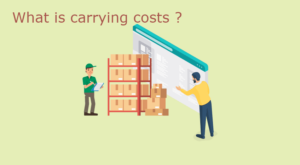Cost volume profit(CVP)analysis is important tool of profit planning & provides information about following i.e. cost, profit and volume.
Content
1. Meaning of Cost volume profit(CVP)analysis
2. What is the meaning of break even analysis and formula?
3. Elaboration of basic terms of cost volume profit(CVP)analysis –
- Contribution/Gross margin
- P/V ratio
- Margin of safety
1. Meaning of Cost volume profit(CVP)analysis
Cost volume profit(CVP)analysis provides information on following matters:
1. The behavior of cost in relation to volume.
2. Volume of of production/sales, where business will break even.
3. Sensitivity of profits due to variation in output.
4. Amount of profit for a projected sales volume.
5. Quantity of production and sales for target profit level.
Further, CVP analysis can also be defined as a management tool showing the relationship between various ingredient of profit planning i.e. cost (fixed or variable), volume of activity, selling price.
This analysis is cost accounting method used to analyze the relationship between cost, volume, and profit. It helps to find out the impact of cost, volume and pricing changes on company’s profitability. Company uses this to determine the break even point where cost is equal to revenue.
2. What is the meaning of break even analysis and formula ?
i) Meaning and explanation:
A system of determination of that level of activity where total cost is equal to total selling price.
Further, it means system of analysis which determines probable profit at any level of activity.
In simple words, break even is a situation where company neither making profit nor loss but all costs have been covered. BEP is useful in studying relationship between variable cost, fixed cost and revenue. Generally lower fixed cost lower will be the break even sales.
The point which breaks the total costs and variable costs evenly to show the level of output or sales at which there shall be neither profit nor loss.
Further, at this point income of a business is exactly equal to its expenditure.
At BEP = Total cost = Total sales
Income = Expenditure
- If Production > BEP = Profit shall accrue
- If Production < BEP = Loss suffered by the business
ii) How to calculate break even point?
For calculating break even point first have to calculate contribution. Thus, contribution is a excess of selling price over variable cost .
Contribution = Total sales – Total variable cost
OR
Contribution per unit = selling price per unit-variable cost per unit
Break even point per unit = Fixed cost / Contribution per unit
Break even point (of sales) = Fixed Costs / Contribution x total sales
OR
= Fixed cost/ P/V ratio
iii) What is desired profit ?
AT BEP desired profit is zero.
In case the volume of output/sales is to be computed for a desired profit .The amount of desired profit is to be added to fixed cost in formula.
Thus, units of desired profit = Fixed cost+ desired profit/ Contribution per unit
Sales for desired profit = Fixed cost+ desired profit/ P/V ratio
iv) For Example:
Variable cost p.u. =Rs. 10 , Fixed cost = Rs. 1,00,000 and selling price per unit Rs. 30 , Find out break even sales ?
=>Contribution = Profit + Fixed cost or sale price p.u. – variable cost p.u.
= Rs. 30-Rs.10
= Rs. 20
Break even point = Fixed cost / Contribution per unit i.e.
= Rs.1,00,000/ Rs.20 p.u.
= 5,000 unit
Break even sales in Rs. = selling price per unit x Break even units
= 5,000 unit x Rs. 20
= Rs. 1,00,000
3. Elaboration of basic terms for cost volume profit(CVP)analysis –
a) Contribution/Gross margin
Contribution is a excess of selling price over variable cost . For computation of contribution fixed costs are not considered.
Formula for computing contribution /gross margin = Total sales – Total variable cost
OR
Contribution per unit = selling price per unit-variable cost per unit
b) P/V ratio i.e. Profit volume ratio
It establishes the relationship between sales value and contribution. This also known as “contribution /sales ratio”.
Further this ratio is important for studying the profitability of operation of a business. And important for management to find out which product is more profitable.
P/V Ratio = Contribution/ Sales
OR
Sales-Variable costs / Sales i.e. S-V/S
OR
1- Variable costs/ Sales
c) Margin of safety (MS) in cost volume profit(CVP)analysis
It means total sales minus break even point. Margin of safety is a large sign of soundness of a business even with the substantial reduction in sales , profit shall be earned by the business.
Further, If the margin is small , reduction in sales, even too a small extent may affect profit position very adversely and larger reduction in sales may result in losses. Thus, MS is a indicator to the strength of the business.
MS = T.S-BES
Margin of safety = Total sales – Break even sales
This can also be computed by following formula:
Margin of safety = Net profit/ P/V ratio



